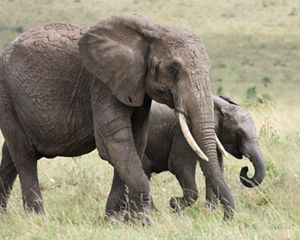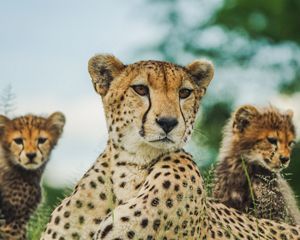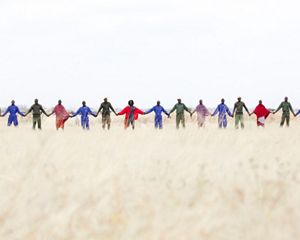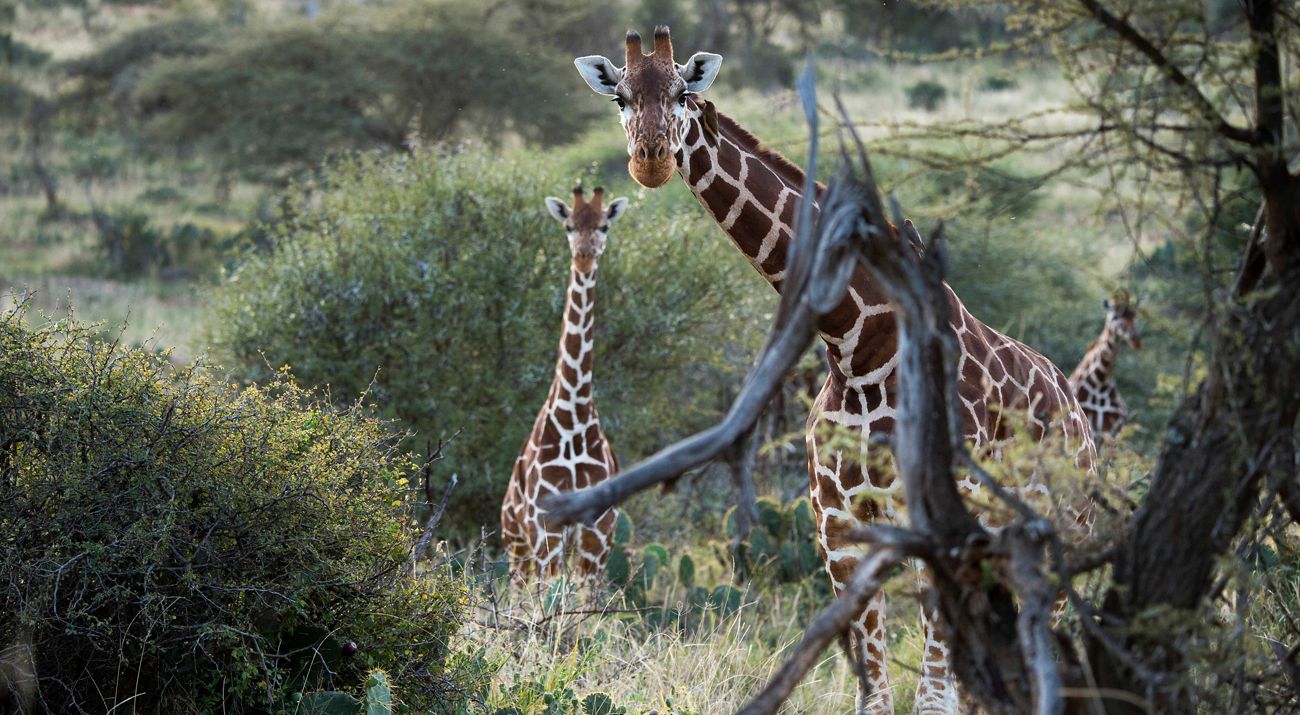
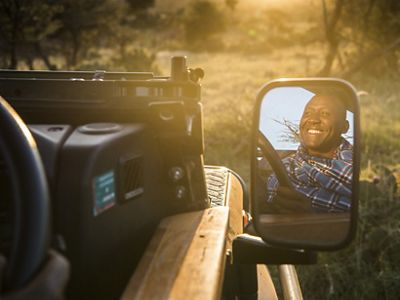
While the world has been focused on the crisis of elephant and rhino poaching, a catastrophe has been brewing for giraffes. Giraffes have been in the shadows, being quietly decimated. But luckily, some researchers have been paying attention to the declining trends for the last decade or more, and are poised to help increase the priority of conservation interventions for these gentle giants.
In February 2016, biologist David O’Connor with San Diego Zoo Global launched a two-year reticulated giraffe conservation research program, in partnership with TNC, Loisaba Conservancy, Giraffe Conservation Foundation, and Northern Rangelands Trust. The initiative will help researchers better understand the threats to giraffes by learning about pastoralists’ interactions with them, and discovering the impact that livestock has on the behaviors of giraffes. The program will be identifying giraffe individuals using GPS data and a network of camera traps. More recently, In December 2016, the International Union for Conservation of Nature (IUCN) moved giraffes two categories down the IUCN Red List of Threatened Species from "Least Concern" to "Vulnerable." The IUCN reports that the new designation was due to the giraffe's dramatic 40 percent decline since 1985.
Symon Masiaine is the leader of Twiga Walinzi (“Giraffe Guards”), five local pastoralists who run the daily operations of the research program at Loisaba Conservancy and Namunyak Conservancy. Symon, who comes from the nearby village of Il Polei, provides an insider’s look at the giraffe crisis.
Have you noticed a change in the giraffe population over your lifetime?
There have been a lot of changes. When I was growing up, there were a lot of giraffes in this area. Now there aren’t many. There are few giraffes in community-owned lands; now they are found in the privately owned lands.
What do you think conservationists can do to reverse the trend?
The biggest problem facing giraffes here is habitat loss and fragmentation. Creating conservation areas in community-owned lands can increase giraffe numbers because it will expand habitat—the breeding and feeding grounds—and will create connections between protected areas like Loisaba and Samburu Reserve to allow for migration.
We need more community scouts to monitor giraffes, and we must properly equip them with uniforms and GPS units. And very importantly, we must create more awareness amongst the communities.
How do you think this program in particular can help?
We are gathering information that will help determine the most important strategies to reverse the decline of the giraffe population.
We set up camera traps in mid-June and I track giraffes in the field, using a methodology called Wild ID, which allows me to recognize individuals. I work to recognize key individuals (e.g., how many calves, how many males, how many females). We also look at giraffe mortality (e.g., we had a giraffe killed by lions, and I need to see which giraffe that was).
Over the last three months, we have been working hard to approximate how many giraffes are in Loisaba, Namunyak, and neighboring conservancies, so that we can recognize trends of increase or decline. We will be putting GPS collars on some giraffes in coming months, which will help us learn more about their migratory patterns.
The project is also helping creating awareness with communities about the decline of the giraffe populations. We hold talks with neighboring communities. When setting up the camera traps we explain to the communities the importance of giraffes and their link to tourism. We are also planning to host talks with guests in Loisaba and Namunyak.
Our scouts are important ambassadors, too. They not only help defend against poaching, they are the best tool for spreading the word. We need to hire more of them.
Are giraffes important to communities in northern Kenya?
Yes, they are part of the tourist attractions in the North. People want to see reticulated giraffe. In conservation, they are creating jobs: They created a job for me and my scout team of four other people.
Overall we believe that local communities like giraffes. Some people in the North do feed on giraffes and use the skins (e.g., for knife handles). We are currently carrying out surveys with the communities so we should have clearer answers on attitudes. This data will help us determine how best to persuade people to support giraffe conservation.
What does your work day involve?
I tend to cover approximately 40 to 60 kilometers a day. Sometimes close to 100 kilometers. I’m usually by myself—but I need an assistant! Sometimes I start at 6 a.m. and sometimes I end at 8 p.m., as I like to stay late and see if I can see some leopard. I check the camera traps once every one to two weeks depending on location.
I love to interact with the local communities. I also really enjoy sitting and watching the giraffes.
How close do the giraffes allow you to get? Are they scared of people?
In Loisaba, I can get about 20 to 30 meters away on foot. In Namunyak, it is a bit harder and I can only get to about 70 meters in my car. They started off quite skittish, but I feel like the giraffes are starting to know who I am and I can get closer.
What are the biggest hazards of the job?
When there are cattle incursions, the cattle and the herders can be a hazard. Also cattle and giraffes do not interact very well, so when there is a lot of cattle the giraffes move.
Why did you want to be a part of this reticulated giraffe research project?
I have always liked conservation. I was in the Environmental Club in High School. I started my career in conservation here in Loisaba with a wild dog research project. I then decided to pursue higher education, and in 2013 I earned a BSc in environmental conservation and natural resources management from the University of Nairobi.
Afterwards I worked on cheetah research in the Masaai Mara. The work that I am doing with Loisaba and Namunyak now is similar to that. My friends were a bit resistant to me changing jobs to study a vegetarian species as they said that I was a “carnivore” man, but I said to them that I love and want to conserve all animals.
How do your friends and family react to the work you are doing?
They love it. They are very supportive of my involvement in the protection of wildlife. In fact, all of my brothers have followed in my path. One brother is earning a diploma in wildlife and tourism; another is a ranger in Naibunga; and my other brother is a senior guide with a tour operator. And my son, who is 10 years old, is already in his school’s wildlife club.
What do you think might surprise Westerners to know about giraffes?
They have a very interesting running pattern. Also watching them eat is very interesting as their tongues can navigate around the leaves. Their saliva is also antiseptic. Giraffes also have the same number of spinal vertebrae as humans.
---
VIEW PHOTOS TO SAVE GIRAFFES
You can help support this project and have fun doing it. The researchers need help cataloging the more than 1 million photos taken by the motion-activated cameras — that's where you come in. Through Wildwatch Kenya, you simply scroll through camera trap photos and record any animals you see in the images. Enjoy getting a behind-the-scenes look at African wildlife and the knowledge that you are doing your part to help protect this magnificent species.
